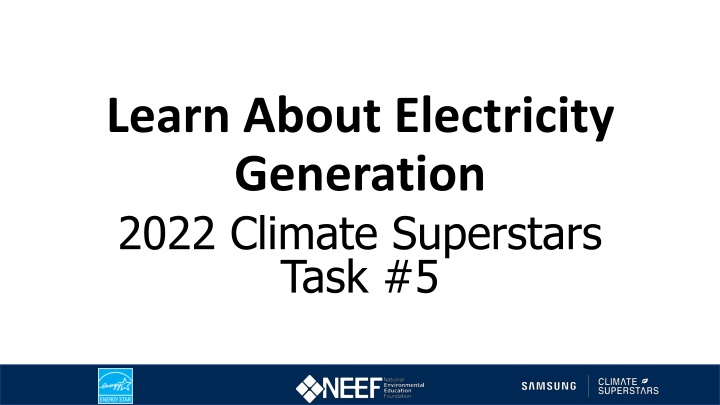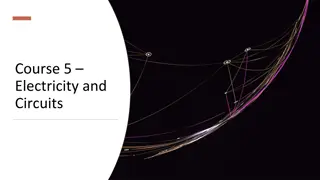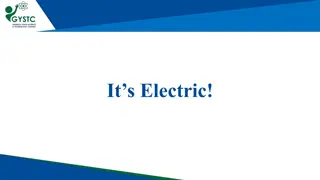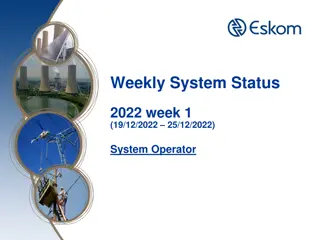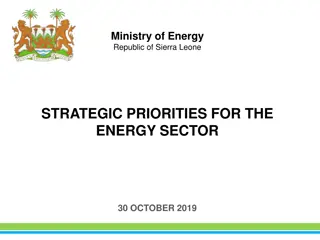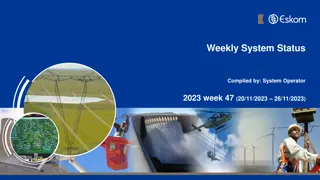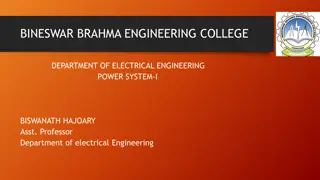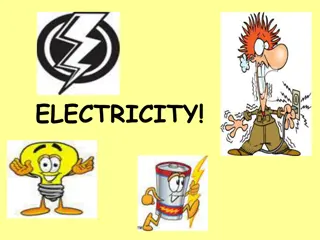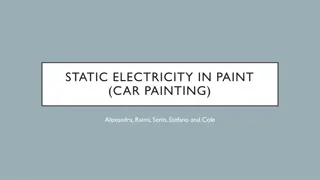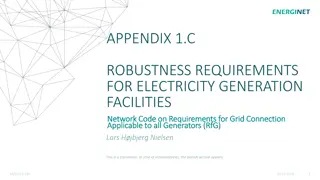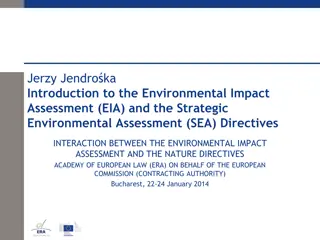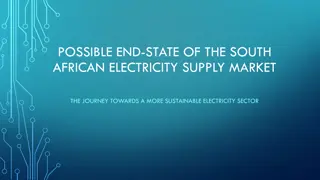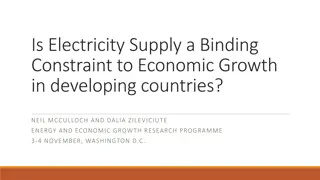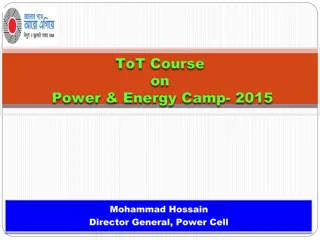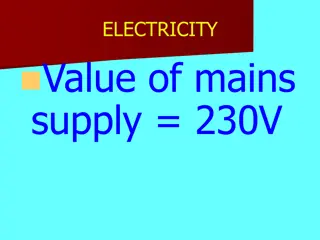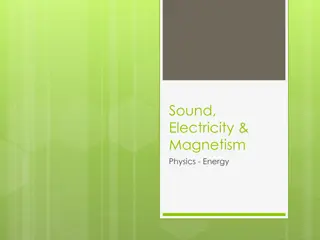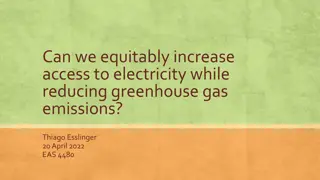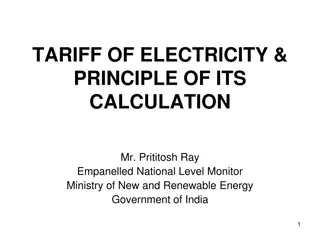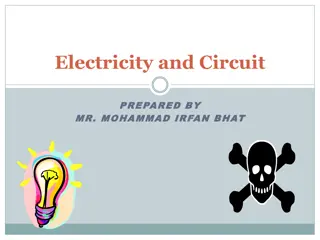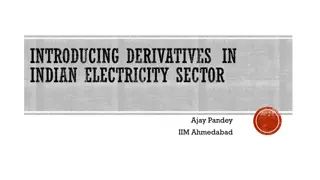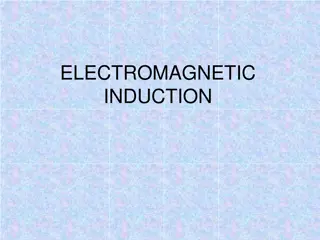Electricity Generation and Its Environmental Impact
Explore the diverse energy sources and technologies used for electricity generation, including fossil fuels, nuclear energy, and renewables like biomass, geothermal, hydropower, solar, and wind. Learn about turbine technology, the impact of electricity generation on the environment, and the role of power plants in converting energy from various sources into electricity.
Uploaded on Oct 06, 2024 | 0 Views
Download Presentation

Please find below an Image/Link to download the presentation.
The content on the website is provided AS IS for your information and personal use only. It may not be sold, licensed, or shared on other websites without obtaining consent from the author.If you encounter any issues during the download, it is possible that the publisher has removed the file from their server.
You are allowed to download the files provided on this website for personal or commercial use, subject to the condition that they are used lawfully. All files are the property of their respective owners.
The content on the website is provided AS IS for your information and personal use only. It may not be sold, licensed, or shared on other websites without obtaining consent from the author.
E N D
Presentation Transcript
Learn About Electricity Generation 2022 Climate Superstars Task #5
Learning Objectives After completing this task, you will be able to List the different non-renewable energy sources. Identify and describe the different methods of generating electricity. Explain how combustion of fossil fuels results in the creation of greenhouse gases.
Vocabulary Generator a device that converts mechanical (or chemical) energy into electricity using electromagnetic induction Kinetic energy property of a moving object or particle that depends not only on its motion but also on its mass Thermal energy an example of kinetic energy, as it is due to the motion of particles, with motion being the key. Thermal energy results in an object or a system having a temperature that can be measured. Thermal energy can be transferred from one object or system to another in the form of heat. Radiant energy energy that travels by waves or particles, also known as electromagnetic radiation. Some examples include heat, x-rays, visible light, and radio waves. Turbine a machine for producing continuous power in which a wheel or rotor, typically fitted with vanes, is made to revolve by a fast-moving flow of water, steam, gas, air, or other fluid
Watch this short video to learn about the process of generating electricity. Video for Energy 101 https://youtu.be/20Vb6hlLQSg
Electricity and the Environment Nearly all types of electricity generation have an impact on the environment, but some methods have larger impacts than others. Electricity in the United States is produced (i.e. generated) with diverse energy sources and technologies. The three major categories of energy used for electricity generation are fossil fuels (e.g. coal, natural gas, and petroleum), nuclear energy, and renewable energy sources (i.e. biomass, geothermal, hydropower, solar, and wind). Most electricity is generated with steam turbines using fossil fuels, nuclear, biomass, geothermal, and solar thermal energy. A turbine is a device that converts the energy source into mechanical energy by forcing blades to rotate which then turns the generator shaft. Other major electricity generation technologies include gas turbines, hydro turbines, wind turbines, and solar photovoltaics.
What is a Power Plant? A power plant is an industrial facility for generating electricity. To generate electricity, power plants convert energy from a wide variety of sources. Here are a few types: Fossil-fuel power plants burn coal, oil, or natural gas Geothermal power plants use steam and very hot water extracted from underground Hydroelectric plants convert the kinetic energy of moving water Nuclear power plants harness thermal energy produced by a nuclear reactor Solar power plants convert the sun s radiant energy Wind turbines convert the kinetic energy of wind As of December 31, 2020, there were about 11,070 power plants in the United States that have operational generators with a combined generation capacity of at least 1 megawatt (MW). A power plant may have one or more generators, and some generators may use more than one type of fuel.
Do some research to learn the following: Which kind of power plant supplies electricity to your community, school, or home? Check all that apply. How much renewable energy does your local power plant or utility use to produce electricity? Action Item Biomass Fossil fuel Geothermal Hydroelectric Nuclear Solar Wind
